Exploring Zhenguo Temple: Where Nature Meets Spirituality in China
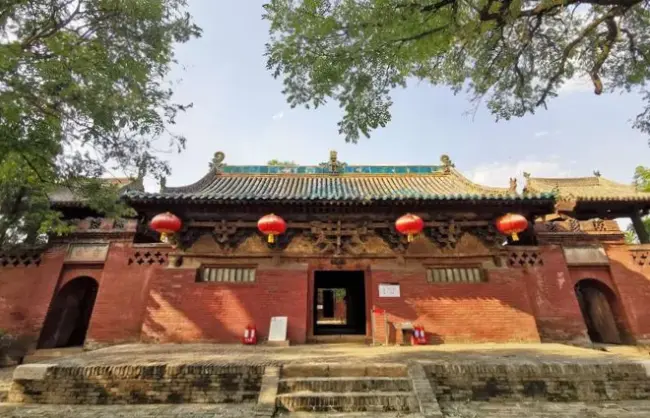
An Essential Guide to Visiting Zhenguo Temple
In This Guide
- An Essential Guide to Visiting Zhenguo Temple
- The Rich History and Legends of Zhenguo Temple
- Main Highlights: What You Absolutely Can’t Miss
- Planning Your Visit: A Practical Guide
- Tickets: Prices, Booking, and Tips
- How to Get There: A Complete Transportation Guide
- Local Cuisine and Accommodation Nearby
- Frequently Asked Questions
- Final Thoughts on Your Trip
Zhenguo Temple stands as a serene testament to China’s rich tapestry of history and culture. Nestled in the heart of Pingyao County, this ancient Buddhist temple, dating back to 963 AD, is one of the oldest wooden structures in the country. Its remarkable preservation offers a rare glimpse into the architectural brilliance of the 10th century, making it a must-visit for anyone intrigued by China’s historical narrative and artistic heritage.
As you approach Zhenguo Temple, you will be greeted by the tranquil ambiance that envelops the site, far removed from the bustling tourist attractions of nearby Pingyao. Here, the whispers of history resonate through the ancient wooden beams and intricate carvings that adorn the temple’s halls. The temple houses an array of captivating statues and murals, each telling stories of devotion and artistry from a bygone era.
What Makes Zhenguo Temple Special?
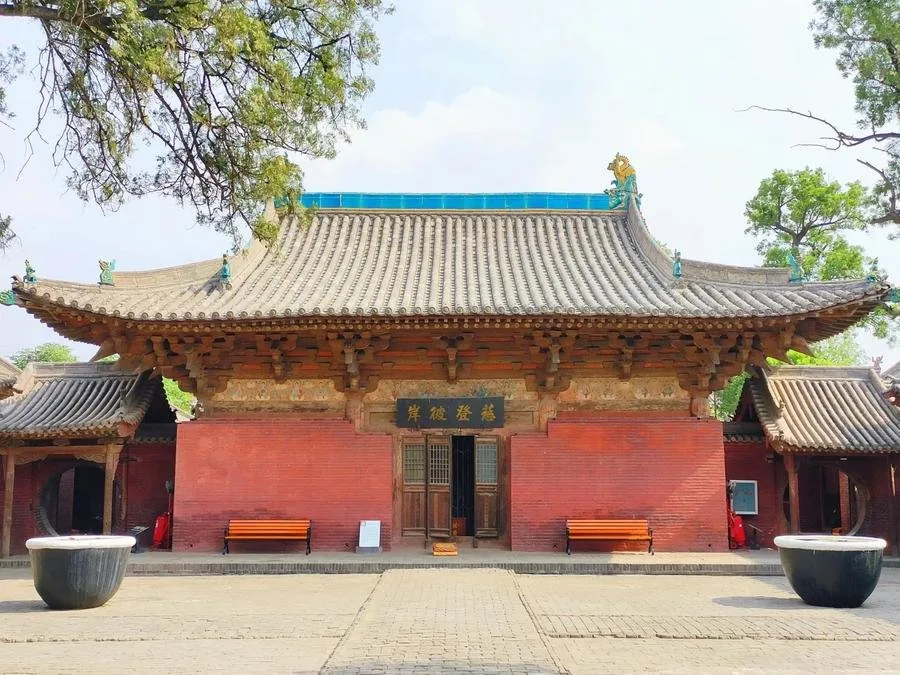
Zhenguo Temple.
-
Architectural Marvel: The temple is celebrated for its exquisite craftsmanship, showcasing the unique styles of Chinese temple architecture. The Wan Fo Dien building, in particular, stands out with its intricate designs that invite comparisons with more modern constructions.
-
Historical Significance: As one of the few remaining examples of ancient temple construction, Zhenguo Temple allows visitors to step back in time, immersing themselves in the spiritual and cultural fabric of early Chinese civilization.
-
Serenity and Solitude: Unlike many of China’s popular tourist sites, Zhenguo Temple offers a peaceful retreat where visitors can reflect and absorb the serene atmosphere, often finding themselves as the only guests in this historic sanctuary.
Visiting Zhenguo Temple is not just about witnessing architectural beauty; it’s an opportunity to connect with the profound spiritual heritage of Buddhism in China. Whether you are an architecture enthusiast, a history buff, or simply seeking a moment of tranquility, this temple promises an enriching experience that resonates long after your visit.
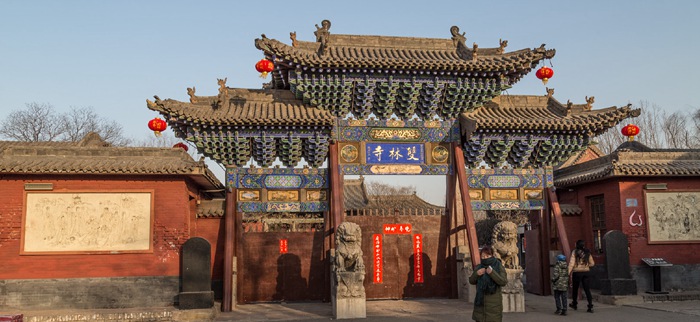
Zhenguo Temple.
The Rich History and Legends of Zhenguo Temple
Unveiling the History and Legends of Zhenguo Temple
Nestled in the tranquil landscapes of Pingyao County, Zhenguo Temple (镇国寺) stands as a testament to China’s rich architectural and spiritual heritage. With origins tracing back to 963 AD, this remarkable temple is not only one of the oldest wooden structures in China but also a significant cultural landmark that encapsulates centuries of history and legends.
Architectural Marvel of the 10th Century
Zhenguo Temple showcases the exquisite craftsmanship of 10th-century Chinese architecture. The temple’s wooden beams and intricate carvings have withstood the test of time, offering visitors a rare glimpse into the construction techniques of the past. Among its notable features is the Wan Fo Dian—a hall that houses numerous statues and murals that reflect the artistic styles and religious practices of the era.
This hall is often regarded as an architectural wonder, allowing enthusiasts to compare it with newer constructions within the temple complex, which date back to around 500 years ago. For architecture aficionados, Zhenguo Temple serves as an invaluable case study, showcasing how traditional designs have evolved while retaining their core elements.

Zhenguo Temple.
Legends and Spiritual Significance
As with many ancient sites, Zhenguo Temple is steeped in legends that enrich its historical narrative. One popular tale speaks of the temple’s founding during the tumultuous times of the Five Dynasties and Ten Kingdoms period. It is said that a renowned monk was guided by a celestial vision to establish a place of worship that would provide refuge and spiritual guidance to the weary travelers of the era. This narrative underscores the temple’s role as a sanctuary, a theme that resonates deeply in its serene atmosphere today.
Another legend involves the temple’s statues, particularly those of Buddha and various bodhisattvas. Local folklore holds that these statues possess the power to bestow blessings upon visitors. Many believe that if one offers prayers and performs acts of kindness, the statues will grant protection and prosperity. This belief has attracted pilgrims and tourists alike, eager to experience the spiritual essence of the temple.
A Quiet Retreat Amidst History
Unlike the more commercialized attractions in Pingyao, Zhenguo Temple remains relatively untouched by mass tourism, offering a peaceful retreat for those seeking solace and reflection. The serene environment allows visitors to immerse themselves in the temple’s history, where the echoes of ancient chants seem to linger in the air, creating a palpable sense of reverence.
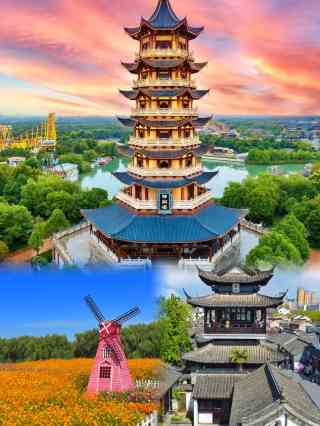
Zhenguo Temple.
With its captivating architecture, rich history, and enchanting legends, Zhenguo Temple is not just a site to visit; it is an experience that invites travelers to step back in time and connect with China’s spiritual legacy. Whether you are an architecture enthusiast, a history buff, or simply in search of tranquility, Zhenguo Temple promises an enriching journey through the heart of Chinese culture.
Main Highlights: What You Absolutely Can’t Miss
Discover the Treasures of Zhenguo Temple
Nestled in the serene landscapes of Pingyao County, Zhenguo Temple (镇国寺) stands as a testament to China’s rich history and architectural brilliance. Here are the main highlights you absolutely cannot miss during your visit to this remarkable site:
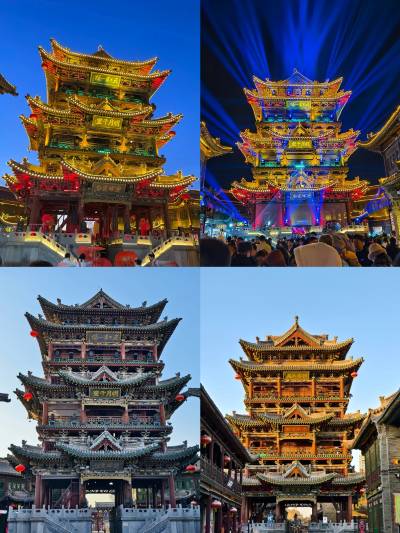
Zhenguo Temple.
1. Historical Significance
Zhenguo Temple dates back to 963 AD, making it one of the oldest wooden structures in China. Its long history offers a unique glimpse into the evolution of Buddhist architecture and the cultural heritage of the region. As you wander through its halls, you can almost feel the passage of time and the layers of stories embedded in its walls.
2. Architectural Marvel
This temple is renowned for its 10th-century construction, showcasing traditional Chinese architectural styles that have survived for over a millennium. The Wan Fo Dien building, in particular, is a highlight; its intricate design and craftsmanship are awe-inspiring. Architecture enthusiasts will appreciate the contrast between this ancient structure and later constructions within the temple complex.
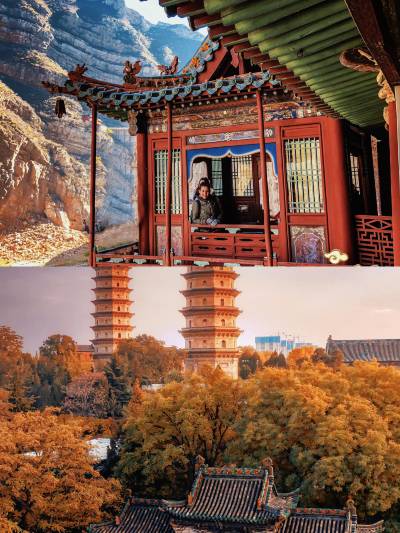
Zhenguo Temple.
3. Buddha Statues and Murals
Inside Zhenguo Temple, you’ll encounter a stunning collection of Buddha statues and vibrant murals. Each statue is not just a representation of Buddhist deities but also a piece of art that reflects the religious beliefs and artistic styles of its time. The murals are especially captivating, retaining their original colors and themes, allowing visitors to experience the spiritual ambiance of the temple.
4. Quiet Serenity
Unlike more commercial tourist sites, Zhenguo Temple offers a peaceful retreat away from the hustle and bustle of Pingyao. Many visitors have noted the tranquil atmosphere, which allows for quiet reflection and a deeper connection to the history and spirituality of the site. The soft rustling of trees and the gentle sounds of nature enhance this serene experience.

Zhenguo Temple.
5. Authentic Experience
Zhenguo Temple is often described as a “forgotten gem”, attracting a modest number of visitors compared to other renowned sites. This provides an authentic experience where you can explore the temple without the crowds, allowing for a more personal interaction with its history and beauty.
6. Accessibility
Located just a short drive from the city center, Zhenguo Temple is easily accessible by car, taxi, or local bus. The journey takes about 20 minutes, making it a convenient addition to your itinerary while you explore the ancient streets of Pingyao.
7. Guided Tours Available
To enrich your visit, consider hiring a local guide. A knowledgeable guide can provide insight into the temple’s history, architecture, and cultural significance, ensuring that you leave with a deeper understanding of this historical site.
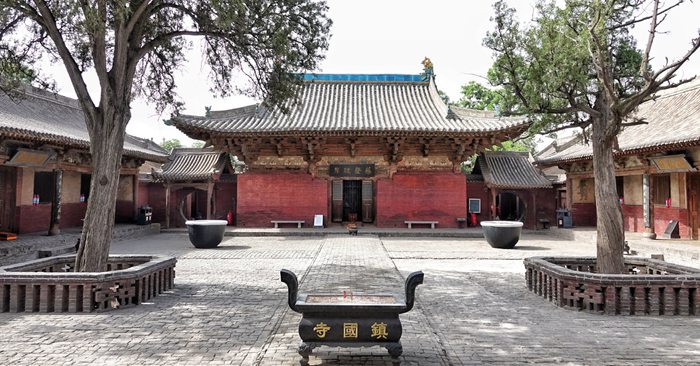
Zhenguo Temple.
Conclusion
Zhenguo Temple is more than just a stop on your travel itinerary; it is a journey into the heart of Chinese history and culture. Whether you are an architecture buff, a history enthusiast, or simply seeking a peaceful place to reflect, this ancient temple promises an unforgettable experience. Make sure to include it in your travels to Pingyao for a truly enriching adventure!
Planning Your Visit: A Practical Guide
Getting to Know Zhenguo Temple
Nestled in the serene landscapes of Pingyao County, Zhenguo Temple (镇国寺) offers a captivating journey into China’s architectural and spiritual heritage. Established in 963 AD, it is one of the oldest surviving wooden structures in the country, making it a must-see for anyone interested in Chinese history and culture.
Location and Accessibility
Zhenguo Temple is located approximately 20 minutes by car from downtown Pingyao, easily accessible via taxi, private car, or local bus services. For those traveling from the Pingyao train station, bus number 9 is a convenient option that takes about 40 minutes to reach the temple. Given its slightly off-the-beaten-path location, it’s advisable to plan your visit during the day to immerse yourself fully in its tranquil atmosphere.

Zhenguo Temple.
Opening Hours and Admission
Zhenguo Temple is typically open from 8:30 AM to 5:30 PM. Admission fees are around 24 RMB (approximately $4), which is quite reasonable considering the historical significance and the preservation of the site. Hiring a local guide for an additional fee (around 20 RMB) can significantly enhance your experience, providing insights into the temple’s intricate architecture and spiritual significance.
What to Expect During Your Visit
Upon arrival, visitors are greeted by the temple’s peaceful ambiance, a perfect reprieve from the bustling streets of Pingyao. Here’s what to look forward to:
-
Architectural Marvels: The temple features stunning examples of 10th-century Chinese architecture. The Wan Fo Dien building is particularly noteworthy, allowing you to contrast ancient and newer constructions within the complex.
-
Historical Significance: As one of the few surviving examples of ancient temple construction, Zhenguo Temple offers a tangible connection to China’s rich past. The intricate details of the wooden structures and the well-preserved statues provide a fascinating glimpse into the spiritual life of ancient China.
-
Art and Decor: Don’t miss the exquisite murals and terracotta figures that adorn the temple’s interiors. Many visitors have remarked on the untouched quality of these artworks, which add to the temple’s historical allure.
-
Peaceful Surroundings: Unlike many tourist-heavy spots, Zhenguo Temple is relatively quiet, offering a serene environment for reflection and exploration. Many travelers have noted the temple’s calm atmosphere as a highlight of their visit, making it an excellent location for photography or simply enjoying the moment.
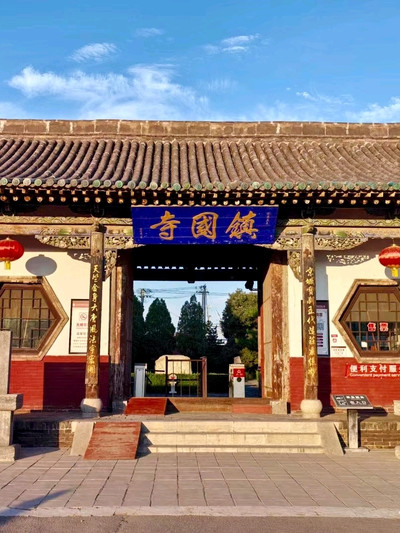
Zhenguo Temple.
Tips for an Enriching Experience
-
Plan for Time: Allocate at least two hours for your visit to fully appreciate the temple’s architecture and artwork.
-
Stay Hydrated: Bring water, especially during warmer months, as you may find limited facilities available on-site.
-
Respect the Space: As a functioning Buddhist temple, maintain a respectful demeanor. Quietness is appreciated, allowing others to enjoy the spiritual environment.
-
Capture the Moment: Use your camera to capture the beauty of the temple, but be mindful of areas where photography may be restricted.
Nearby Attractions
While Zhenguo Temple is a gem in its own right, consider pairing your visit with nearby historical sites such as:
-
Shuanglin Temple: Another ancient temple that showcases beautiful sculptures and murals, located just a short drive away.
-
Ancient City of Pingyao: Explore the well-preserved architecture of this UNESCO World Heritage site, rich with history and culture.
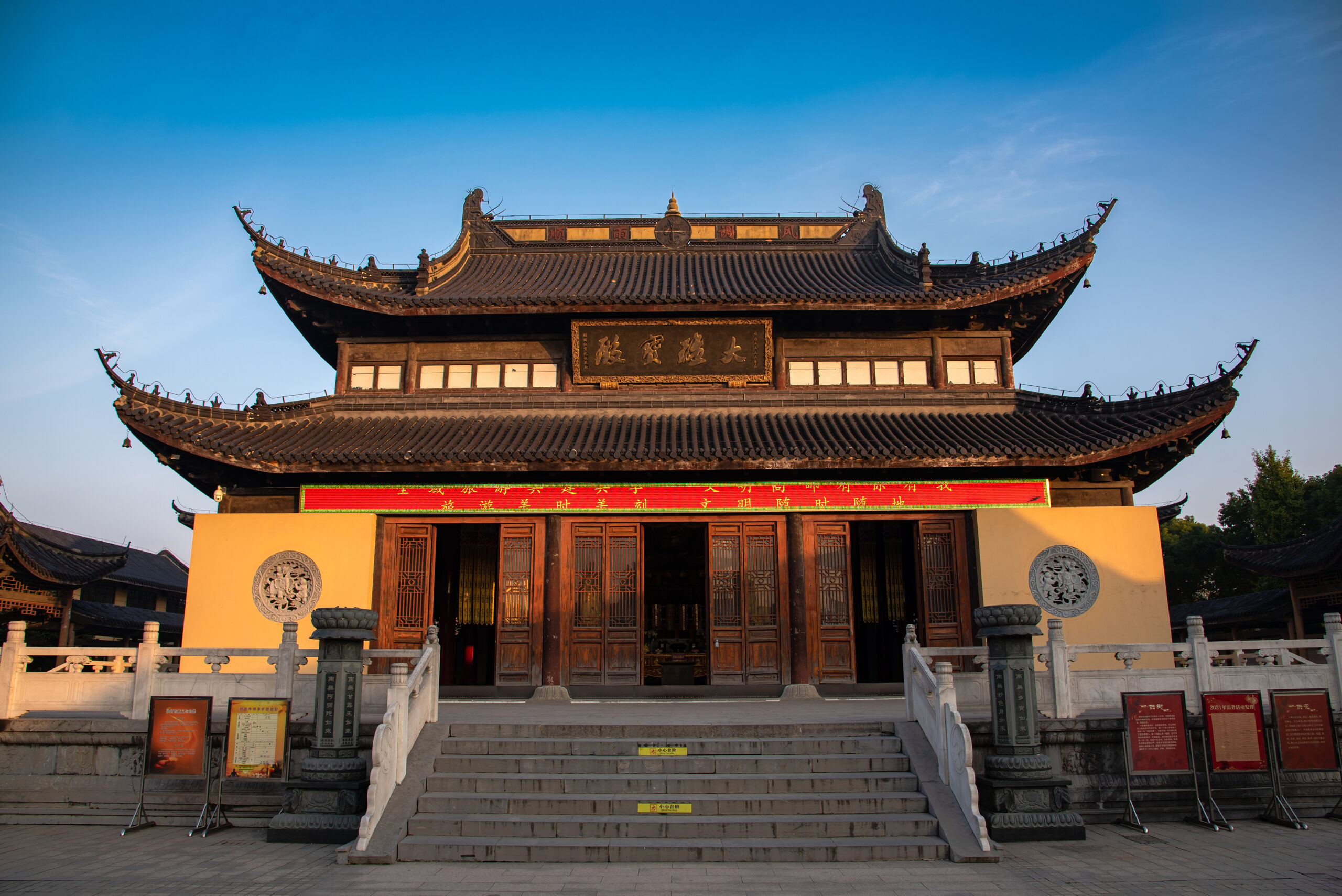
Zhenguo Temple.
Conclusion
Visiting Zhenguo Temple offers more than just a sightseeing opportunity; it’s a chance to connect with China’s profound historical and spiritual roots. With its serene setting, rich architectural heritage, and peaceful atmosphere, it’s an experience that will resonate long after you leave. Prepare to be enthralled by its beauty and tranquility on your journey through Pingyao County.
Tickets: Prices, Booking, and Tips
When planning your visit to the Zhenguo Temple (镇国寺) in Pingyao County, understanding the ticketing process, prices, and some handy tips can greatly enhance your experience. This ancient Buddhist temple, with roots dating back to 963 AD, is one of the oldest wooden structures in China and a must-see for any traveler interested in Chinese history and architecture.
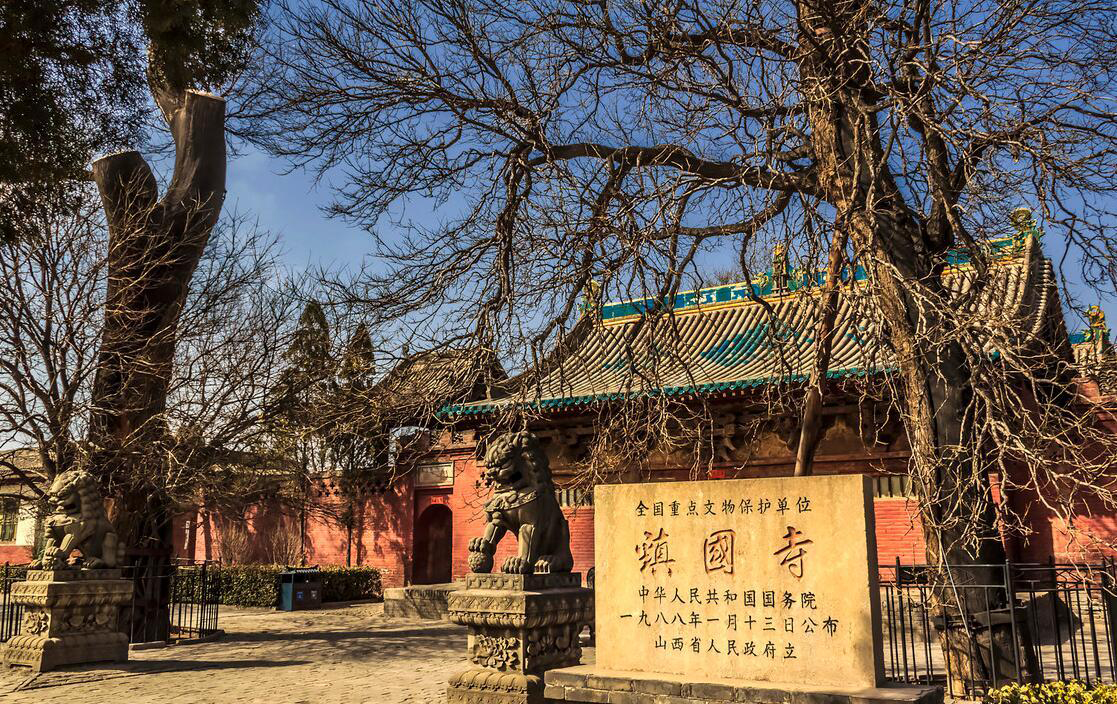
Zhenguo Temple.
Ticket Prices
- Entrance Fee: Approximately ¥24 (around $3.50 USD). This fee grants you access to the temple grounds and its stunning architecture.
- Guided Tour Fee: If you wish to delve deeper into the history and significance of the temple, consider hiring a guide for an additional ¥20 (about $3 USD). A knowledgeable guide can significantly enrich your visit with insights about the temple’s architectural features and the stories behind its ancient sculptures and murals.
Booking Information
- On-site Purchase: Tickets can be purchased directly at the entrance of the temple. Given its relatively low visitor numbers, long lines are unlikely.
- Group Tours: If you prefer a more organized experience, look for local tour operators that include Zhenguo Temple in their itineraries. This option often combines visits to other historical sites in Pingyao for a comprehensive cultural experience.
Tips for Visiting
- Best Time to Visit: Arrive early in the morning or later in the afternoon to enjoy a quieter experience. The temple is known for its serene atmosphere, especially compared to the busier tourist sites in Pingyao.
- Transportation: Zhenguo Temple is located about a 20-minute drive from downtown Pingyao. You can reach it by taxi, local buses (Bus No. 9 from the old train station), or by renting a bicycle if you’re feeling adventurous.
- Duration of Visit: Plan to spend around 1.5 to 2 hours exploring the temple. This allows ample time to appreciate the intricate architecture, ancient statues, and beautiful murals without feeling rushed.
- Photography: Capture the stunning architecture and serene surroundings, but be respectful of the sacred space, especially in areas where worship occurs.
- Dress Code: While there are no strict dress codes, wearing modest clothing is advisable, as Zhenguo Temple is an active religious site.
Visiting Zhenguo Temple offers a unique glimpse into China’s rich architectural heritage and Buddhist culture. With its tranquil ambiance and historical significance, it’s a perfect addition to your itinerary in Pingyao. Enjoy your journey through time!
How to Get There: A Complete Transportation Guide
Getting to Zhenguo Temple: A Comprehensive Transportation Guide
For international travelers venturing into the heart of Shanxi Province, Zhenguo Temple (镇国寺) offers a glimpse into ancient Chinese architecture and Buddhist culture. This remarkable temple, dating back to 963 AD, is one of the oldest wooden structures in China and is conveniently located just outside the historic town of Pingyao. Here’s how to navigate your way to this serene and historically rich site.
By Air
Nearest Airport:
– Pingyao Airport (IATA: PYG) is the closest airport, approximately 7 kilometers from the ancient town of Pingyao. However, this airport has limited flight options.
Major Airports:
– Taiyuan Wusu International Airport (IATA: TYN): Located about 100 kilometers from Pingyao, this is the primary airport in the region, with more frequent domestic flights. From the airport, you can choose from various transport options to reach Pingyao.
By Train
Traveling by train is one of the most convenient options for reaching Pingyao from major cities in China:
- From Taiyuan: High-speed trains from Taiyuan to Pingyao take approximately 1.5 hours. This route is well-frequented and offers a comfortable ride.
- From Beijing: Trains from Beijing West Railway Station to Pingyao can take between 4 to 6 hours, depending on the service.
Once you arrive at the Pingyao Railway Station, you can easily continue your journey to Zhenguo Temple.
By Bus
If you prefer traveling by bus, several options are available:
- From Pingyao City Center: Local buses operate frequently to Zhenguo Temple, with Bus No. 9 being a popular choice. The ride takes around 40 minutes and drops you near the temple entrance.
- From Taiyuan: Long-distance buses run from Taiyuan to Pingyao. After reaching Pingyao, take a local bus or taxi to the temple.
By Taxi or Private Car
For a more direct and comfortable journey, consider hiring a taxi or renting a car. Here are some details:
- From Pingyao: A taxi ride to Zhenguo Temple takes approximately 20 minutes and costs around 30-50 RMB (around $5-8 USD), depending on traffic and time of day.
- From Taiyuan: The drive from Taiyuan to Zhenguo Temple typically takes about 1.5 to 2 hours. Using a ride-hailing app or renting a car with a driver can enhance your travel experience.
Walking or Biking
For those who appreciate a leisurely pace, walking or biking from Pingyao to Zhenguo Temple is an option, especially for the more adventurous spirits. The scenic route allows you to enjoy the picturesque landscapes of Shanxi Province, although it is advisable to prepare for a longer journey.
Tips for Visiting
- Entrance Fee: The entrance fee for Zhenguo Temple is approximately 24 RMB (around $4 USD). Hiring a local guide can enrich your experience and provide deeper insights into the temple’s history and architecture.
- Best Time to Visit: Early morning or late afternoon is ideal for visiting, as you can enjoy the tranquility of the temple grounds without the crowds.
- Weather Considerations: Check the local weather before your trip, as the best time to visit Pingyao is typically in spring and autumn when temperatures are mild.
Zhenguo Temple is not only a historical treasure but also a serene escape from the hustle and bustle of modern life. With this guide, you’re well-equipped to embark on your journey to this remarkable site, ensuring you make the most of your visit to one of China’s oldest architectural wonders.
Local Cuisine and Accommodation Nearby
Savoring Local Flavors and Finding Comfort Nearby
Visiting Zhenguo Temple is not just a journey into the heart of ancient Chinese architecture and spirituality; it’s also an opportunity to indulge in the rich culinary landscape of Pingyao. After exploring the temple’s serene aura and its impressive wooden structures that date back to 963, you can treat yourself to some delightful local dishes and rest in accommodations that echo the charm of this historical gem.
Culinary Highlights
Pingyao is renowned for its unique cuisine, heavily influenced by the Shanxi province’s culinary traditions. Here are some must-try dishes and local eateries:
- Pingyao Beef (平遥牛肉): A local specialty, Pingyao beef is marinated and slow-cooked to perfection. It’s flavorful and often enjoyed as a snack or paired with rice.
-
Where to Try: Yuanbao Beef Noodle Shop – Famous for its beef dishes, this eatery offers a cozy atmosphere and authentic flavors.
-
Shanxi Noodles (山西刀削面): These hand-sliced noodles are a staple of the region, served in a savory broth or stir-fried with vegetables and meats.
-
Where to Try: Pingyao Daoxia Restaurant – Known for its freshly made noodles and traditional recipes, this restaurant is a favorite among locals and tourists alike.
-
Vinegar from Shanxi (山西醋): This region is celebrated for its unique vinegar, which adds depth to various dishes. Don’t miss the chance to taste it alongside dumplings or as a dipping sauce.
-
Where to Try: Many local restaurants serve dishes enhanced with Shanxi vinegar, but Lao Zheng’s is particularly noted for its variety and quality.
-
Dumplings (饺子): A beloved comfort food, these dumplings can be found throughout Pingyao, often filled with seasonal vegetables, meat, or seafood.
- Where to Try: Dumpling House – A simple eatery that prides itself on handmade dumplings, offering both traditional and innovative fillings.
Comfortable Stays
To enhance your visit to Zhenguo Temple and the surrounding area, consider staying in one of these charming accommodations:
-
Pingyao Yide Hotel (平遥怡德酒店): This hotel is a blend of traditional architecture and modern convenience. Located just a short drive from the temple, it provides comfortable rooms and a taste of local culture.
-
Jinshan Inn (金山客栈): A quaint, family-run inn that offers a warm atmosphere and personalized service. It’s situated close to the temple, making it an ideal base for exploration.
-
Pingyao Hengxing Hotel (平遥恒兴酒店): Known for its historical ambiance and excellent service, this hotel provides guests with an authentic feel of Pingyao’s rich heritage.
-
Pugongying Boutique Hotel (蒲公英精品酒店): This boutique hotel offers a unique aesthetic with its traditional decor and modern amenities. It’s a great place to relax after a day of sightseeing.
In conclusion, your journey to Zhenguo Temple can be enriched by indulging in Pingyao’s culinary delights and returning to accommodations that reflect the area’s historical charm. Whether you’re a history enthusiast, an architecture lover, or a food aficionado, Pingyao promises a memorable experience.
Frequently Asked Questions
Frequently Asked Questions about Zhenguo Temple
1. What is the history of Zhenguo Temple?
Zhenguo Temple, located in Pingyao County, dates back to 963 AD, making it one of the oldest wooden structures in China. Its rich history is reflected in the architecture and artifacts housed within, including stunning statues and murals that showcase the temple’s Buddhist heritage.
2. How do I get to Zhenguo Temple?
Zhenguo Temple is approximately a 20-minute drive from downtown Pingyao. You can reach it by taxi, car rental, or public bus (Bus No. 9 departs from the old train station). Given the limited public transport options, hiring a taxi or joining a guided tour is recommended for convenience.
3. What are the admission fees?
The entrance fee to Zhenguo Temple is approximately 24 RMB (about $3.50 USD). If you’re interested in a guided tour to enhance your experience, a guide’s fee is around 20 RMB (about $3 USD). Investing in a guide can provide deeper insights into the temple’s historical and architectural significance.
4. What can I expect to see inside the temple?
Visitors to Zhenguo Temple can admire ancient architecture and intricate Buddhist statues. The temple features the Wan Fo Dien building, an excellent example of 10th-century construction, and various halls adorned with beautiful murals. The serene atmosphere allows for peaceful reflection and appreciation of its historical context.
5. Is Zhenguo Temple crowded with tourists?
Zhenguo Temple is often described as a hidden gem, attracting a smaller number of international visitors compared to other sites in Pingyao. Many travelers appreciate the temple’s tranquil ambiance, making it a great spot for those seeking a quieter experience away from the bustling tourist crowds.
6. How long should I plan to spend at the temple?
A visit to Zhenguo Temple typically takes around 1.5 to 2 hours. This allows enough time to explore the temple grounds, take photographs, and enjoy the serene environment. If you’re particularly interested in architecture or history, consider allocating additional time to delve deeper into the temple’s features.
7. Are there any facilities available for visitors?
While Zhenguo Temple is primarily focused on its historical and cultural offerings, basic amenities such as restrooms are available on-site. However, dining options are limited, so it’s advisable to plan your meals before or after your visit.
8. What is the best time to visit Zhenguo Temple?
The best time to visit Zhenguo Temple is during the spring and autumn months (April to June and September to November), when the weather is mild and pleasant for outdoor exploration. Early mornings or late afternoons can also provide a quieter experience, allowing you to fully appreciate the temple’s serene atmosphere.
Final Thoughts on Your Trip
As your journey through the historical landscapes of Pingyao draws to a close, a visit to Zhenguo Temple stands as a poignant reminder of China’s rich tapestry of culture and spirituality. Nestled away from the bustling streets, this serene temple offers a rare glimpse into the architectural grandeur of the 10th century, making it an essential stop for any traveler seeking to delve deeper into the heart of Chinese history.
A Timeless Experience
-
Architectural Marvel: Marvel at one of the oldest wooden structures in China, the Wan Fo Dien, which has stood the test of time since its establishment in 963 AD. The intricate carvings and aged wooden beams tell stories of a bygone era, captivating architecture enthusiasts and casual visitors alike.
-
Cultural Significance: The temple is not just a relic; it’s a living testament to the Buddhist traditions that have shaped the region. The statues and murals within are not only visually stunning but also steeped in meaning, offering insights into the spiritual life of ancient China.
-
Peaceful Retreat: Many travelers have noted the tranquil atmosphere of Zhenguo Temple. This sanctuary provides a welcome respite from the more commercialized tourist spots, allowing you to reflect and connect with the history that surrounds you.
Leaving with More Than Memories
As you prepare to leave Zhenguo Temple, take a moment to appreciate the quietude and the palpable sense of history that envelops this sacred space. Whether you are an architecture aficionado, a history buff, or simply seeking a moment of peace, this temple will undoubtedly enrich your understanding of China’s cultural landscape.
In conclusion, your visit to Zhenguo Temple is not merely a stop on your itinerary; it is an invitation to experience the serene and contemplative essence of Chinese Buddhism. Carry the stories, the beauty, and the tranquility of this ancient place with you, as they will surely resonate long after you leave. Safe travels!